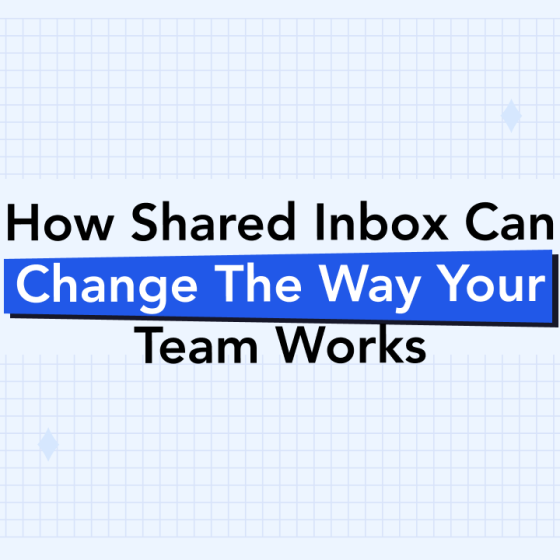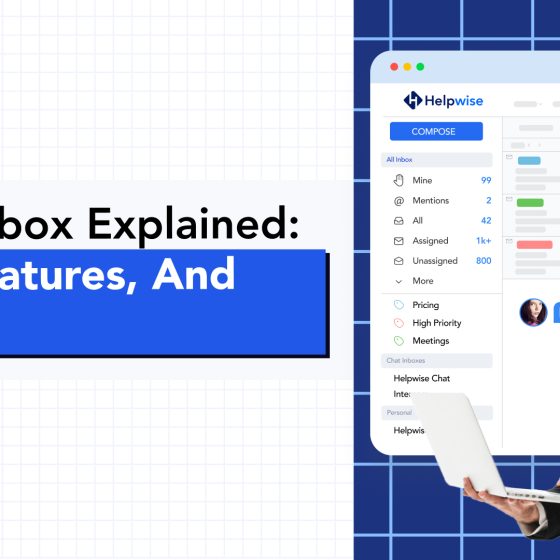You have to consider all of the factors when looking at a shared mailbox vs distribution list.
The fact is they both come with pros and cons. So, which is right for your business?
The short answer is it depends on your goals for it! What are you planning to do with it and how will you use it to your advantage?
Considering all of your options, you need to determine which of these will be best for your business. Here are some of the things to consider to get you started.
Shared Mailbox
A shared mailbox is a mailbox that multiple users can use to read and send email messages. Shared mailboxes can also provide a joint calendar and thereby allow for multiple users to schedule and view vacation time or work shifts.
A shared mailbox is an individual mailbox that users can be given access to use. This mailbox has its an Inbox, Drafts, Sent Items; however, it can’t be a user’s main email.
Users given full access to a shared mailbox will see the mailbox in Outlook underneath their personal Inbox and other folders will be shown on the left-hand side of the screen.
An individual copy of any emails sent to the shared mailbox’s email address will get stored in the Inbox and any user with access can read them. Users may also be given Send As permissions that allow them to alter the email address in the From section of an email that they write. They can then send the email from the shared mailbox’s address.
Deleting an email from a shared mailbox deletes the email for everyone who has access to this email box. Shared mailboxes can’t be used on a mobile device; they are only reachable through the Outlook app on a PC or OWA in a web browser.
Distribution List
A distribution list is a list or group of mail recipients. Distribution lists are used to send emails to groups of people without having to enter each recipient’s email address one by one. A distribution list differs from an email list.
Members in it can’t reply to the distribution list’s name to send messages to everyone else in the group. Users in a distribution list will receive any emails sent to the address of the distribution list.
When replies to an email received through a distribution list, the response is sent with the user’s email address. Mail can’t be sent from the distribution list’s address. When an email received through a distribution list is deleted, it removes the email only for the user who deletes the email.
Shared Mailbox vs Distribution List
While each of these is a great option, there some severe disadvantages to using a distribution list. One is having to make changes or update as employees leave and join.
When you move your company to a shared email inbox, it helps to reinforce a perception of trust and transparency. When you consider it, how could you not have a trusting culture if virtually every employee at the company can read every email? There are no secrets.
It sends the message loud and clear, nothing to see here. The grapevine and discussions around the water cooler run dry.
Shared inboxes can also be collective by joining multiple email accounts into one inbox for streamlined management. Businesses often have a central email account for inquiries, sales, or customer service that different employees can check but cannot collaboratively answer.
Shared Mailbox Management Solutions
A notable aspect that makes shared inbox software very useful is it allows for excellent collaboration. It will enable various people from a team to communicate with each other internally, in addition to the client.
All of it can be done from a single platform! Just in case you want to discuss something with another team member about an email, you can do so by adding comments and @mentioning the team member, which saves you the hassle of a long trail of emails.
Another indispensable aspect of a shared mailbox is it allows all team members to access all emails systematically. Besides, they can reply as well.
This way, there is full access to all pieces of communication. Each team member can contribute easily.
It also solves the problem of email collision between the members of the team. When all the members have access to the mail, the possibility of more than one person responding to the same email is likely. In some cases, people will leave the task of replying to inquiries on others, which leads to delayed replies, and may result in annoying the client.
Signs That Change is Needed
Customer support workflows are essential since they generally affect the client experience. If someone is unhappy with the experience and reaches out for a solution, even a tiny hangup can send them packing.
Keeping that in mind, here are a few clear signs that its time to upgrade:
- Customers follow up on emails when they never got a reply after a few days.
- Team members reply to the same customer email with duplicate or conflicting input.
- You don’t know who was managing a customer support issue, and it takes some investigating to find the user and the solution they offered.
- You have no reporting insights into the volume of emails you get, how fast your team replies, who’s replying to what, or how satisfied your customers are with the answers they’re reading.
- Collaboration is challenging. There is no clear way to assign things to particular users or add notes and comments without sending those emails to different teammates.
Finding a Better Solution
As your business grows, it is a struggle to control customers, sales, or internal emails and you know you’re seeing the signs. Sharing email logins among team members usually ends in disaster, too. The shared mailbox software sector is growing tremendously and with good reason.
When traditional methods of shared mailbox and distribution lists aren’t working anymore, it’s time for a change. Increase the scalability of your business with a shared inbox from Helpwise.
Finding an answer to the shared mailbox vs distribution list dilemma is a challenge. If you still have questions, ask for a Free Demo today.










